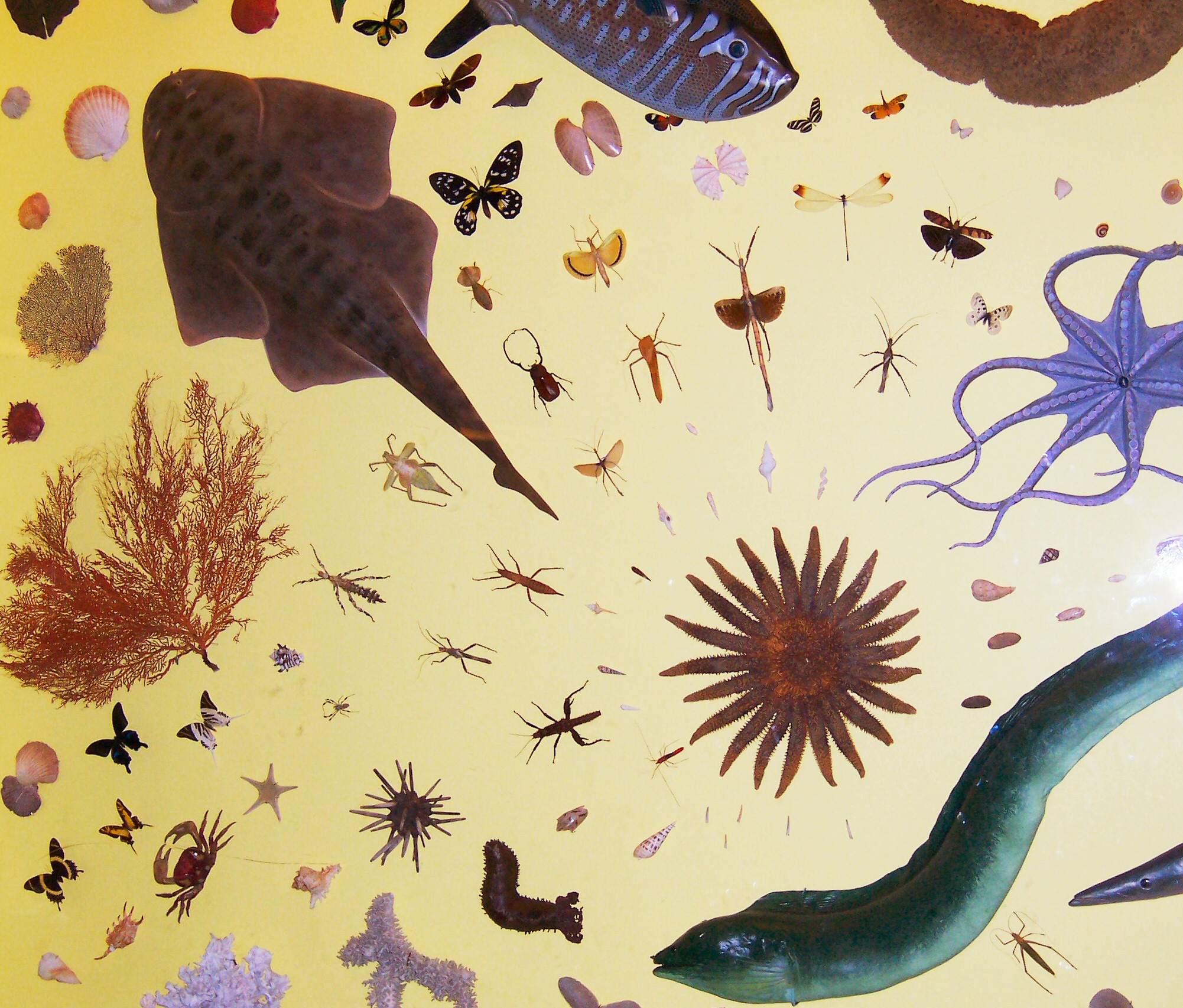|
Obturator Foramen
The obturator foramen is the large, Bilateral symmetry, bilaterally paired opening of the bony pelvis. It is formed by the pubis and ischium. It is mostly closed by the obturator membrane except for a small opening, the obturator canal, through which the obturator nerve and vessels pass. Structure The obturator foramen is situated inferior and somewhat anterior to the acetabulum. It is bounded by the pubis bone and the ischium: superiorly by the (grooved obturator surface) of the Superior rami of the pubes, superior ramus of pubis, inferiorly by the Ischium#Structure, ramus of ischium, and laterally by (the anterior edge of) the body of ischium (including by the margin of the acetabulum). The margin of the foramen is thin and uneven, and gives attachment to the obturator membrane. Superiorly, it presents a deep groove - the obturator groove - which passes obliquely inferomedially from the pelvis. The foramen is largely closed by the obturator membrane save for a small opening at ... [...More Info...] [...Related Items...] OR: [Wikipedia] [Google] [Baidu] |
Bilateral Symmetry
Symmetry in biology refers to the symmetry observed in organisms, including plants, animals, fungi, and bacteria. External symmetry can be easily seen by just looking at an organism. For example, the face of a human being has a plane of symmetry down its centre, or a pine cone displays a clear symmetrical spiral pattern. Internal features can also show symmetry, for example the tubes in the human body (responsible for transporting gases, nutrients, and waste products) which are cylindrical and have several planes of symmetry. Biological symmetry can be thought of as a balanced distribution of duplicate body parts or shapes within the body of an organism. Importantly, unlike in mathematics, symmetry in biology is always approximate. For example, plant leaves – while considered symmetrical – rarely match up exactly when folded in half. Symmetry is one class of patterns in nature whereby there is near-repetition of the pattern element, either by Reflection (geometry), reflect ... [...More Info...] [...Related Items...] OR: [Wikipedia] [Google] [Baidu] |
Obturator Artery
The obturator artery is a branch of the internal iliac artery that passes antero-inferiorly (forwards and downwards) on the lateral wall of the pelvis, to the upper part of the obturator foramen, and, escaping from the pelvic cavity through the obturator canal, it divides into an anterior branch and a posterior branch. Structure In the pelvic cavity this vessel is in relation, laterally, with the obturator fascia; medially, with the ureter, ductus deferens, and peritoneum; while a little below it is the obturator nerve. The obturator artery usually arises from the internal iliac artery. Inside the pelvis the obturator artery gives off iliac branches to the iliac fossa, which supply the bone and the Iliacus, and anastomose with the ilio-lumbar artery; a vesical branch, which runs backward to supply the bladder; and a pubic branch, which is given off from the vessel just before it leaves the pelvic cavity. The pubic branch ascends upon the back of the pubis, communicating with ... [...More Info...] [...Related Items...] OR: [Wikipedia] [Google] [Baidu] |
Obturator Internus Muscle
The internal obturator muscle or obturator internus muscle originates on the medial surface of the obturator membrane, the ischium near the membrane, and the rim of the pubis. It exits the pelvic cavity through the lesser sciatic foramen. The internal obturator is situated partly within the lesser pelvis, and partly at the back of the hip-joint. It functions to help laterally rotate femur with hip extension and abduct femur with hip flexion, as well as to steady the femoral head in the acetabulum. Structure Origin The internal obturator muscle arises from the inner surface of the antero-lateral wall of the pelvis. It surrounds the obturator foramen. It is attached to the inferior pubic ramus and ischium, and at the side to the inner surface of the hip bone below and behind the pelvic brim. It reaches from the upper part of the greater sciatic foramen above and behind to the obturator foramen below and in front. It also arises from the pelvic surface of the obturator mem ... [...More Info...] [...Related Items...] OR: [Wikipedia] [Google] [Baidu] |
Hypoplasia
Hypoplasia (; adjective form ''hypoplastic'') is underdevelopment or incomplete development of a tissue or organ. Dictionary of Cell and Molecular Biology (11 March 2008) Although the term is not always used precisely, it properly refers to an inadequate or below-normal number of cells.Hypoplasia Stedman's Medical Dictionary. lww.com Hypoplasia is similar to aplasia, but less severe. It is technically ''not'' the opposite of [...More Info...] [...Related Items...] OR: [Wikipedia] [Google] [Baidu] |
Sex Differences In Human Physiology
Sex differences in human physiology are distinctions of physiological characteristics associated with either male or female humans. These differences are caused by the effects of the different sex chromosome complement in males and females, and differential exposure to gonadal sex hormones during development. Sexual dimorphism is a term for the phenotype, phenotypic difference between males and females of the same species. The process of meiosis and Human fertilization, fertilization (with rare exceptions) results in a zygote with either two X chromosomes (an XX female) or one X and one Y chromosome (an XY male) which then develops the typical female or male phenotype. Physiological sex differences include discrete features such as the respective male and female Human reproductive system, reproductive systems, as well as average differences between males and females including size and strength, bodily proportions, hair distribution, breast differentiation, voice pitch, and bra ... [...More Info...] [...Related Items...] OR: [Wikipedia] [Google] [Baidu] |
Acetabular Notch
The acetabular notch is a deep notch in the inferior portion of the rim of the acetabulum The acetabulum (; : acetabula), also called the cotyloid cavity, is a wikt:concave, concave surface of the pelvis. The femur head, head of the femur meets with the pelvis at the acetabulum, forming the Hip#Articulation, hip joint. Structure The .... It is bridged by the transverse acetabular ligament, converting it into a foramen (through which nerves and vessels (including the acetabular notch of obturator artery) pass into the hip joint cavity). It is continuous with space of the acetabular fossa. The lunate surface of acetabulum is discontinued opposite the notch. The ligament of the head of the femur attaches at the margins of the notch. The anterior margin of the acetabular notch presents a posterior obturator tubercle onto which the obturator membrane attaches. References Bones of the pelvis {{musculoskeletal-stub ... [...More Info...] [...Related Items...] OR: [Wikipedia] [Google] [Baidu] |
Obturator Crest
The anterior border of the superior pubic ramus presents a sharp margin, the obturator crest, which forms part of the circumference of the obturator foramen superiorly and affords attachment to the obturator membrane. The obturator crest extends from the pubic tubercle to the acetabular notch The acetabular notch is a deep notch in the inferior portion of the rim of the acetabulum The acetabulum (; : acetabula), also called the cotyloid cavity, is a wikt:concave, concave surface of the pelvis. The femur head, head of the femur mee .... References Bones of the pelvis Pubis (bone) {{Musculoskeletal-stub ... [...More Info...] [...Related Items...] OR: [Wikipedia] [Google] [Baidu] |
Obturator Veins
The obturator vein begins in the upper portion of the adductor region of the thigh and enters the pelvis through the upper part of the obturator foramen, in the obturator canal. It runs backward and upward on the lateral wall of the pelvis below the obturator artery, and then passes between the ureter and the internal iliac artery, to end in the internal iliac vein. It has an anterior and posterior branch (similar to obturator artery), which are larger than its corresponding arteries. The obturator veins have valves, especially in the extrapelvic section. Additional images File:Gray541.png, Variations in origin and course of obturator artery. File:Gray547.png, The relations of the femoral and abdominal inguinal rings, seen from within the abdomen. Right side. File:Gray1159.png, Veins of the penis A penis (; : penises or penes) is a sex organ through which male and hermaphrodite animals expel semen during copulation (zoology), copulation, and through which male place ... [...More Info...] [...Related Items...] OR: [Wikipedia] [Google] [Baidu] |
Body Of Ischium
The ischium (; : ischia) is a paired bone forming the lower and back part of the . Situated below the ilium and behind the pubis, it is one of three regions whose fusion creates the . The superior portion of this region forms approximately one-third of the |
Bony Pelvis
The pelvis (: pelves or pelvises) is the lower part of an anatomical trunk, between the abdomen and the thighs (sometimes also called pelvic region), together with its embedded skeleton (sometimes also called bony pelvis or pelvic skeleton). The pelvic region of the trunk includes the bony pelvis, the pelvic cavity (the space enclosed by the bony pelvis), the pelvic floor, below the pelvic cavity, and the perineum, below the pelvic floor. The pelvic skeleton is formed in the area of the back, by the sacrum and the coccyx and anteriorly and to the left and right sides, by a pair of hip bones. The two hip bones connect the spine with the lower limbs. They are attached to the sacrum posteriorly, connected to each other anteriorly, and joined with the two femurs at the hip joints. The gap enclosed by the bony pelvis, called the pelvic cavity, is the section of the body underneath the abdomen and mainly consists of the reproductive organs and the rectum, while the pelvic floor at ... [...More Info...] [...Related Items...] OR: [Wikipedia] [Google] [Baidu] |
Ischium
The ischium (; : ischia) is a paired bone forming the lower and back part of the hip bone. Situated below the ilium (bone), ilium and behind the pubis (bone), pubis, it is one of three regions whose fusion creates the coxal bone. The superior portion of this region forms approximately one-third of the acetabulum. Structure The ischium is made up of three parts–the body, the superior ramus and the inferior ramus. The body contains a prominent ischial spine, spine, which serves as the origin for the superior gemellus muscle. The indentation inferior to the spine is the lesser sciatic notch. Continuing down the posterior side, the ischial tuberosity is a thick, rough-surfaced prominence below the lesser sciatic notch. This is the portion ...[...More Info...] [...Related Items...] OR: [Wikipedia] [Google] [Baidu] |
Superior Rami Of The Pubes
In vertebrates, the pubis or pubic bone () forms the lower and anterior part of each side of the hip bone. The pubis is the most forward-facing (ventral and anterior) of the three bones that make up the hip bone. The left and right pubic bones are each made up of three sections; a superior ramus, an inferior ramus, and a body. Structure The pubic bone is made up of a ''body'', ''superior ramus'', and ''inferior ramus'' (). The left and right coxal bones join at the pubic symphysis. It is covered by a layer of fat – the mons pubis. The pubis is the lower limit of the suprapubic region. In the female, the pubis is anterior to the urethral sponge. Body The body of pubis has: * a superior border or the pubic crest * a pubic tubercle at the lateral end of the pubic crest * three surfaces (anterior, posterior and medial). The body forms the wide, strong, middle and flat part of the pubic bone. The bodies of the left and right pubic bones join at the pubic symphysis. The rough u ... [...More Info...] [...Related Items...] OR: [Wikipedia] [Google] [Baidu] |





